After a slow start to spring, October has proved to be a wonderful month for orchids especially for our sun orchids that are out there in great numbers, showing their beauty on warm sunny days when the heathlands have been just a mass of colour.
There are so many species with the most spectacular perhaps being the tall blue Great Sun Orchid, Thelymitra aristata, which is flowering abundantly, with impressive flower heads popping up above the surrounding vegetation.
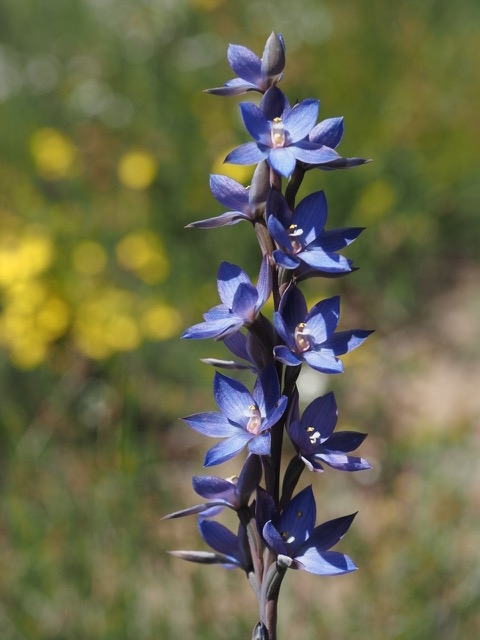 Great Sun Orchid
Great Sun Orchid
Various other blue sun orchids that have been observed include the Rush-leaf, T. juncifolia, Spotted, T. ixioides, Slender, T. pauciflora, and Peppertop, T.brevifolia. You need to look carefully to make a positive identification. It is important to look at the leaves as well as the flowers. The one you are more likely to see is T. juncifolia with its rush-like leaf wrapped around the base of the flower stalk.
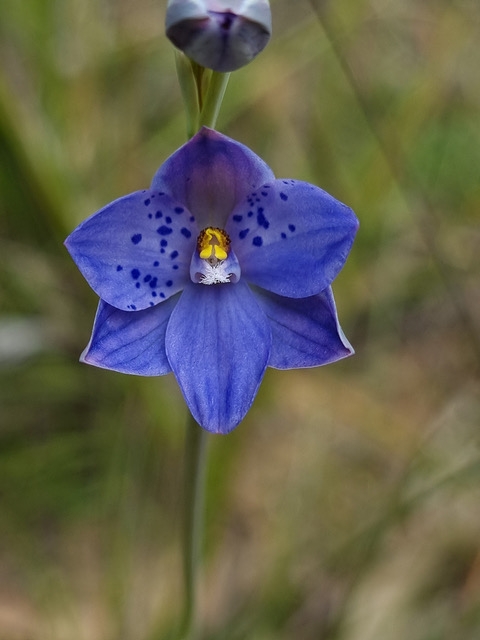 Rush-leaf Sun Orchid
Rush-leaf Sun Orchid
Salmon Sun Orchids, T. rubra, have been putting on a magnificent display, and an exciting discovery was one flower of the Crested Sun Orchid, T. x irregularis, a natural hybrid between T. juncifolia and T. rubra that were both flowering in the vicinity.
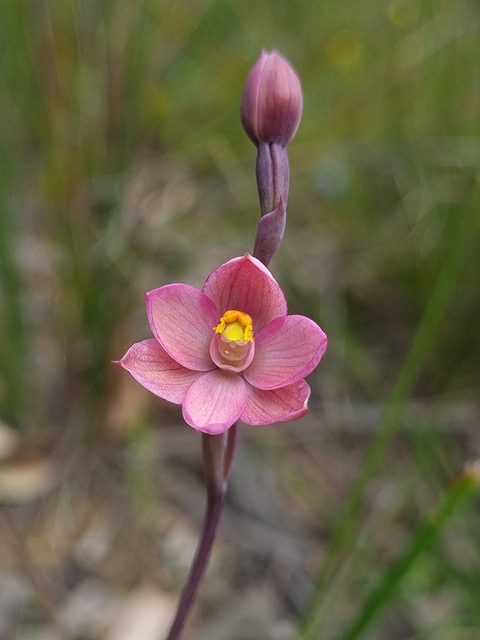 Salmon Sun Orchid
Salmon Sun Orchid
 Crested Sun Orchid
Crested Sun Orchid
The second of our yellow species of sun orchids, the smaller pale yellow Twisted Sun Orchid, T. flexuosa, with its twisted stem had a good flowering season but like many of our sun orchids was very quick to self-pollinate on cooler days.
After just a few Large White Spider Orchids, Caladenia venusta, flowered in September, there are now large, impressive groups of this species in many places.
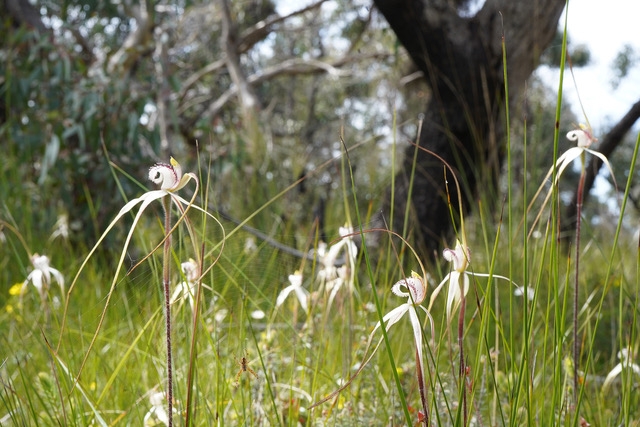 Large White Spider Orchids
Large White Spider Orchids
The Eastern Mantis Orchid, C. tentaculata, is also appearing and some nice hybrids between C. venusta and C. tentaculata have been observed . A few specimens of the rare Southern Spider Orchid, C. australis, were also seen in one of our open forest areas.
 Southern Spider Orchid
Southern Spider Orchid
The finger orchids have been greatly admired. There are large groups of White Fingers, C. catanata, some Pink Fingers, C. carnea, and what we believe is a lot of hybridisation taking place between the two.
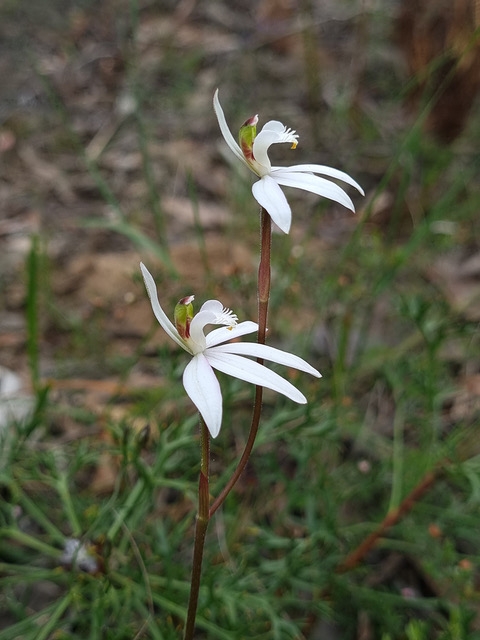 White Fingers
White Fingers
Angahook Fingers, C. maritima, has also had a great flowering season, but it is disappointing to see the hybridisation that we believe is occurring with C. carnea which is producing pink specimens. The tiny Cryptic Fingers, C. mentiens, that was a new species for the new edition of our Anglesea field guide, have been seen in a few places. These are very small flowers similar to Tiny Fingers, C. pusilla, but have pointy sepals and petals, and the flower stem is much longer and more slender.
 Cryptic Fingers
Cryptic Fingers
The flowers don’t last long, similar to Little Bronze Caps, C. transitoria, which have also been observed.
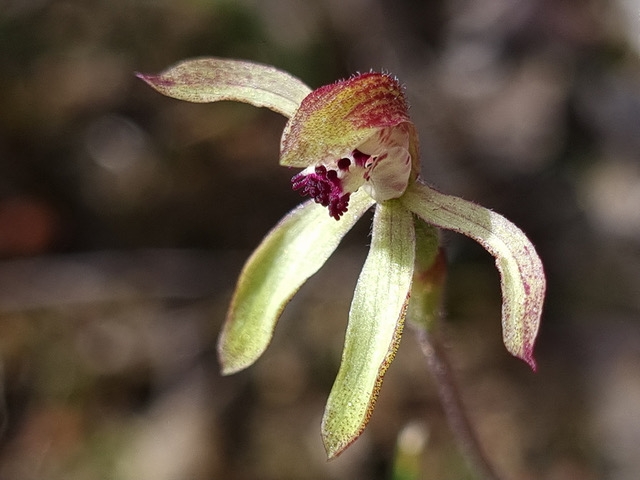 Little Bronze Cap
Little Bronze Cap
The very popular Flying ducks, Caleana major, are starting to flower in old gravel pit areas and sandy habitats.
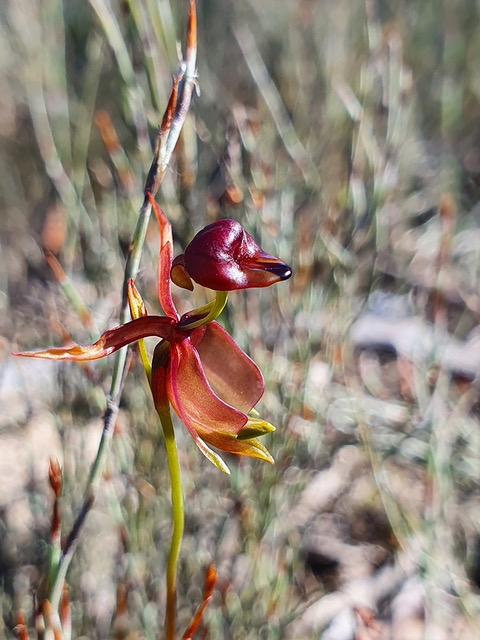 Flying Duck Orchid
Flying Duck Orchid
The Purple Beard Orchid, Calochilus robertsonii, is flowering well in many different habitats and a few Red Beard Orchids, C. paludosus, have been observed.
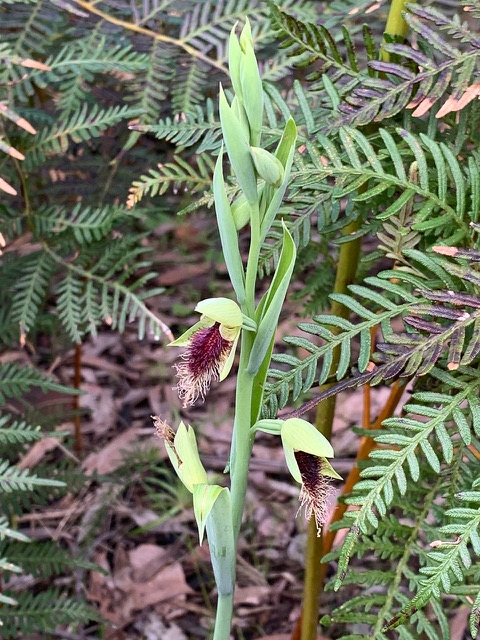 Purple Beard Orchid
Purple Beard Orchid
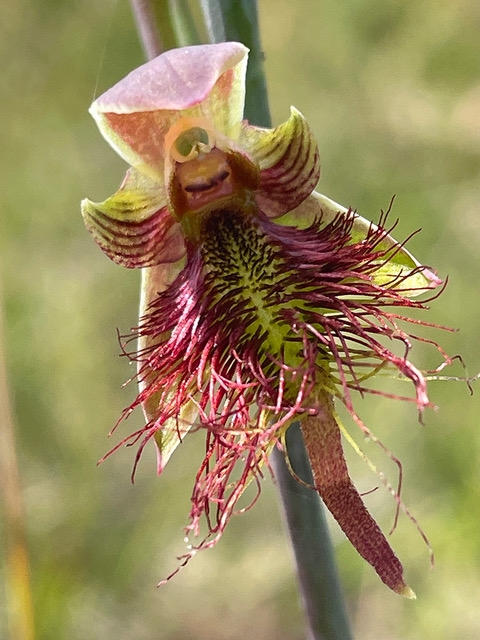 Red Beard Orchid
Red Beard Orchid
We have seen Naked Beard Orchids, C. imberbis, partly open but have been frustrated by the cooler weather that was not encouraging the buds to open. We have not found any of the Copper Beard Orchids, C. campestris, at this stage but they may appear later.’
The Common Bird Orchids, Chiloglottis valida, are starting to flower now, their flowers facing upwards like a young bird begging for food. There have been a few Redbeak Orchids, Pyrorchis nigricans, in flower and just a few of the Hare Orchids, Leptoceras menziesii, have flowered. We have not found good colonies of either of these last two species in any of the burnt areas but we were pleased to find some impressive Tall Leek Orchids, Prasophyllum elatum, flowering in an area burnt last November.
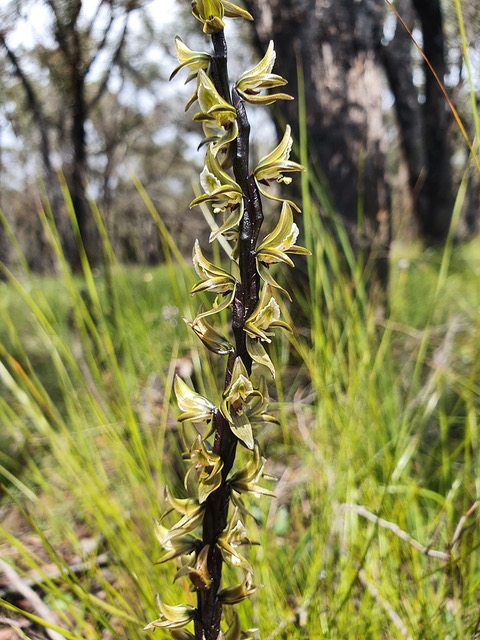 Tall Leek Orchid
Tall Leek Orchid
The colourful Donkey Orchids, Diuris orientis, have flowered well and the later flowering Tiger Orchids, D. sulphurea, are just starting to show their bright yellow flowers with dark-brown markings. .
The new edition of Orchids of the Anglesea District is a pleasure to use. Costing $30.00 it is available from the Angair Natural History Centre on Monday and Thursday mornings, online through the Angair website www.angair.org.au and from Anglesea News & Lotto and Great Escape Books in Aireys Inlet. The larger format, new photos and up-to-date names and additional records make it a must have. We hope you are enjoying your copy while you enjoy the orchids.
Don’t forget to share any important discoveries with us.
Margaret MacDonald margmacmoggs@icloud.com Alison Watson alisonw577@gmail.com